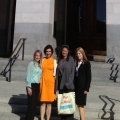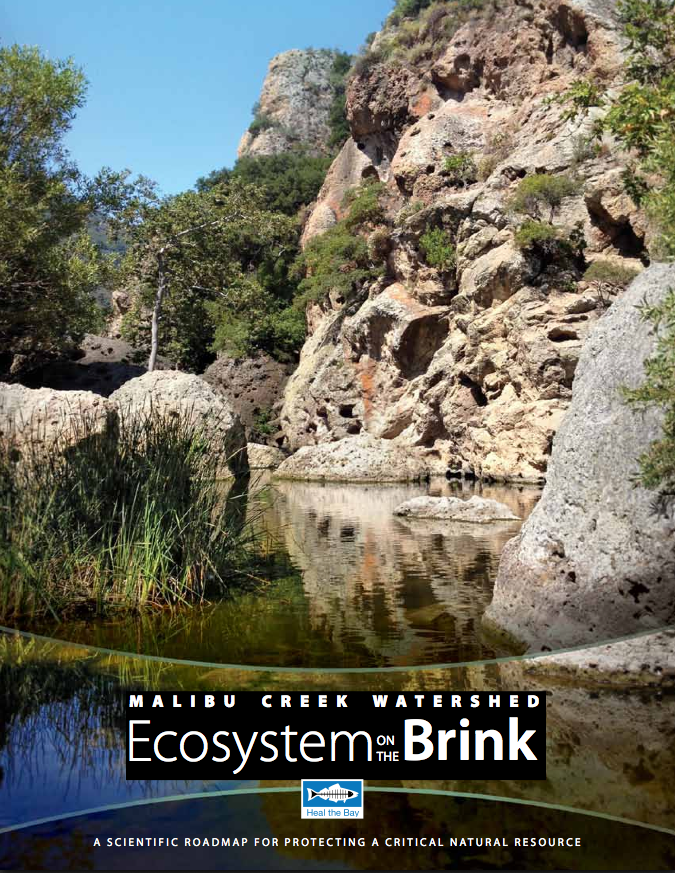To help educate California state legislators about the ecological and economic importance of the sea to all Californians, Heal the Bay staff joined our fellow environmental advocates in the 6th annual Ocean Day at the state Capitol on April 16, 2013. The event lets us work with policymakers to find effective legislative solutions that protect and restore California’s iconic ocean and coastline.
Ocean Day participants, representing over a dozen non-governmental organizations, were able to stop by the offices of all 120 California senators and assemblymembers to discuss preventing stormwater runoff and plastic pollution, the success of California’s Marine Life Protection Act, and the impacts of climate change to California’s inland and coastal communities.
The timing of Ocean Day couldn’t have been better. Two important bills that would help prevent plastic pollution from trashing our communities and beaches were heard in the Senate’s Environmental Quality Committee the day after the event: SB 405 and SB 529.
SB 405, introduced by Sen. Padilla (D-Pacoima), would phase out single-use plastic bags in California grocery stores, convenience stores, liquor stores, and pharmacies and place a charge on single-use paper bags with the hope of encouraging people to bring reusable bags. The bill cleared the Senate Environmental Quality Committee with the votes of Sens. Hill (D-San Mateo), Hancock (D-Berkeley), Leno (D-San Francisco), Corbett (D-Hayward) and Jackson (D-Santa Barbara). It will next be heard in the Senate Appropriations Committee.
Heal the Bay has long supported passage of a statewide single-use bag bill as a means to comprehensively address the negative environmental and economic impacts caused by single-use plastic bags, and Ocean Day presented another opportunity to educate legislators on plastic pollution before this critical Committee vote. As Sen. Padilla noted in a news release about the committee hearing, “Single-use plastic bags are not just a coastal issue. In our mountains, the winds blow discarded bags up into the trees, you can also find them in our rivers and streams, in our parks, and throughout our communities. It is a statewide problem that deserves a statewide solution — a solution that focuses on reducing the use of plastic bags.” We will continue to work with Sen. Padilla’s office to ensure passage of this important (and long-overdue) piece of legislation.
Another bill supported by Heal the Bay – SB 529, introduced by Sen. Leno (D-San Francisco) – would move fast-food chain restaurants away from foamed polystyrene and other nonrecyclable/noncompostable plastics, again with the hope of encouraging more sustainable packaging options. The bill also passed the Senate Environmental Quality Committee with the votes of Sens. Hill, Hancock, Corbett, Leno and Jackson. It will next be heard in the Senate Appropriations Committee.
Novelist Ralph Ellison said that education is all a matter of building bridges. Ocean Day was an opportunity for Heal the Bay and others to reach out to legislators and educate them on the problem of plastic pollution and possible legislative solutions. This information was clearly heard by legislators, and today’s Environmental Quality Committee hearing was an important step in ending California’s addition to single-use plastics. Stay tuned for updates on these bills throughout the legislative session!
— Kathryn Benz, Heal the Bay Policy Analyst
Live in the city of Los Angeles? Urge your councilmember to finalize the single-use bag ordinance that will keep plastic bags from trashing our communities and beaches!




